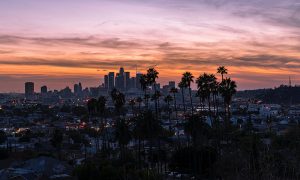Note: This post first appeared in Capitol Weekly
Now that almost all the contests have been decided, what do the 2018 elections tell us about the future of air and climate policies in California? In general, both ballot measures and candidate races give hope to those trying to reduce emissions that are damaging human health and altering our climate.
The environmental community strongly opposed Proposition 6, which would have crippled transportation infrastructure by repealing last year’s gas and diesel tax hikes and requiring all future increases in fuel and vehicle taxes and fees to be put on the ballot.
Although most of the funding goes to repairing roads – and most of the campaign focused on roads – the measure would have also starved public transit and walking and biking improvements.
Even worse, it would have almost certainly blocked any more state revenues for transportation for a generation. So sustainable transportation advocates, while hardly cheering the state’s current infrastructure priorities, breathed a collective sigh of relief with the defeat of 6.
As our next governor, Gavin Newsom will have more influence on California’s air and climate policies than anyone else in the state. We won’t know for sure until he’s been on the job for a while, but indications are that he will seek to continue – and perhaps even accelerate – the state’s transition from a fossil-fuel based economy to one based on clean energy sources.[ux_image id=”3073″ image_size=”medium”]
Particularly encouraging is his campaign pledge to “Set California on a Fast Track to Zero Diesel Pollution,” since diesel exhaust is a toxic air contaminant that particularly plagues our disadvantaged communities near freeways, ports, rail hubs and warehouses. Fulfilling that promise will mean rapidly cleaning up the freight sector, replacing diesel trucks, trains and other heavy-duty engines with zero-emission and near-zero-emission technologies and low-carbon renewable fuels.
Newsom could also fill in a gap left by Gov. Jerry Brown if he begins the process of planning for a just transition away from fossil-fuel production to a clean-energy economy that guarantees both the health of communities and the standard of living of workers.
Much of Newsom’s success in delivering on that promise and the rest of his agenda will depend on who he appoints to key positions. We are likely to see much more continuity than change at the Air Resources Board, where Newsom wisely prevailed on Chair Mary Nichols to stay on for the beginning of his administration.
Newsom and Nichols will no doubt continue to assert California’s leadership in setting the nation’s toughest standards to reduce emissions from motor vehicles, which is particularly important in the face of opposition from the Trump Administration.
The second most important constitutional officer is our attorney general, and Xavier Becerra sailed to a full term by unapologetically standing up for California’s environmental safeguards, suing against Trump Administration rollbacks when necessary, enforcing our health protections, and creating a new environmental justice unit.
Assembly Speaker Anthony Rendon and Senate Leader Toni Atkins, who both have successfully championed groundbreaking laws on climate, air and environmental justice, padded their majorities this fall.
Incumbents like Sen. Andy Vidak and Assemblymembers Matthew Harper and Dante Acosta, who vociferously opposed measures to clean up our air, were ousted by challengers who promise to be much more open to protecting public health.
The huge campaign contributions and deceptive advertising of the oil companies always make it difficult to pass clean-energy legislation, but this year’s election results show that California’s voters support candidates who look out for our health, not the polluters’ profits.
[button size=”large” style=”primary” text=”Donate” link=”https://www.ccair.org/donate” target=””]








